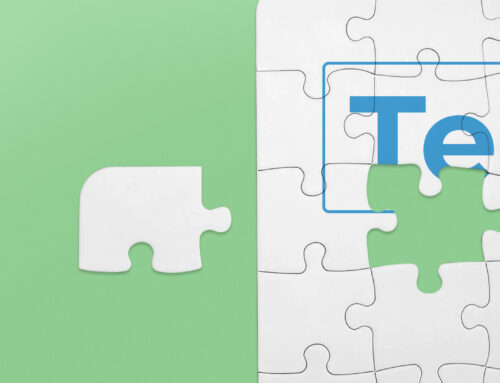This DISC behavioural style tip from The DISC Group is all about people with the S style – the Steadiness style. Here are the strengths, limitations, behaviours, and growth opportunities of individuals with the DISC Steadiness style.
About the Steadiness personality style
Steadiness is one of the DISC profiles inspired by William Moulton Marston’s 1928 book The Emotions of Normal People. The first DISC assessment was created by industrial psychologist Walter Clarke in 1956. Today, modern DISC assessments categorise individuals’ personalities based on four behavioural styles: Dominance, Influence, Compliance, and Steadiness, which we are discussing in this article.
People with the Steadiness DISC profile are patient, even-tempered, and good listeners who appreciate a stable and consistent environment to work in.
We can probably all think of someone we know who has a unique way of adding a sense of stability, calmness, and reassurance to any conversation we have with them. This person is showing one of the key characteristics of the Steadiness style – they are people who naturally “wear well” and are an easy type to get along with. They prefer stable relationships which don’t jeopardise anyone, especially themselves.
Strengths of the Steadiness personality type
There are many strengths associated with this personality which make type S people great team members in any organisation. People with this DISC profile tend to plan and follow through. They are likely to be dependable, loyal, thorough and methodical, coping well with routine and the day to day normalities of their job.
They are also good team players – you can always rely on them to be supportive when times get tough. Their even-tempered nature and patience make them great leaders or coworkers because they seek consensus among the team and try to promote harmony in the group.
Good at multitasking and completing projects, these hard working and task-oriented individuals are a great addition to any work environment.
Limitations of the Steadiness DISC profile
However, the easy-going and moderate-paced nature of these personalities lead to some significant limitations that S style individuals must deal with. Often, these people have unique difficulties with speaking up, seeming to go along with others while inwardly, they may or may not agree. Because they don’t show emotion, you might never be aware of this disagreement until it has become an issue.
More assertive types might take advantage of this Steadiness style tendency to give in and avoid confrontation. Additionally, Steadiness styles’ reluctance to express themselves can result in hurt feelings. However, if they don’t explain their feelings, others may never know. Their lack of assertiveness can even take a toll on this personality type’s health and well-being.
Because they appreciate stability and consistency, Steadiness personality types may also struggle to deal with change or new ways of doing things. This means that they may not innovate to go beyond the status quo because they are comfortable doing things the same way they have always been done.
Growth opportunities for S personalities
For individuals with the DISC S personality, growth opportunities include learning to accept change and becoming more assertive in team settings. While both of these may feel difficult or frightening to people with Steadiness personalities, working to overcome these issues can help individuals become more well-rounded and successful in their careers.
For S types working with D types
S and D style personalities may seem very different, but working relationships between the two types can be very productive if the parties work to understand each others’ personalities. While S personality types tend to prefer stability and consistency, results-driven D types don’t mind taking risks and making big changes to achieve goals. Therefore, people with the Steadiness profile must work to become more comfortable with innovation and change, which can both be valuable in any team setting.
S types may also struggle with the assertiveness and directness of Dominance types, although they will likely prefer to remain passive and ignore the issue rather than talk it out with their coworker. To grow in their careers and personal life, it’s beneficial for S types to practise communicating openly when they disagree with a more outspoken person.
For S types working with I types
The S style and I style are alike in the fact that they prefer to avoid conflict, struggling in difficult conversations and preferring to ignore interpersonal issues that arise. This means that S and I types working in a team together might struggle to raise potential problems with plans or to offer alternative ways of doing things. To overcome this problem, people with S personality traits should work on their conflict resolution skills, learning to bring up potential problems in a way that won’t upset sensitive I types.
S and I types can make a great team if they understand each others’ behaviours and preferences. People with the S personality style love receiving sincere appreciation from their coworkers and being asked questions, so the naturally friendly, enthusiastic, and motivating nature of I types is the perfect fit for them.
For S types working with C types
S types and C types working together can be a powerful combination. People with the Compliance profile are inquisitive, pragmatic, and independent. While type S individuals value building strong interpersonal bonds on their team, they might find it difficult to get the more solitary C types to open up at first. This means that they need to understand that people with Compliance personality profiles take some time to build relationships with their team. S types love working in a team, but they should understand that C types are more independent and often do their best work solo.
For S types working with other S types
Teams that are high in S types are likely to be harmonious and supportive teams that work reliably on the task at hand. They’re good at planning and following through with tasks and like working with a consistent environment and structure. Moreover, they are effective at communicating and finding consensus within the team. However, teams full of S types may struggle with decision-making or innovation, leading to stagnation within the project. To overcome this, people with S personalities need to learn to take initiative and speak out in order to produce the best results for the team.
Conclusion
Necessary for any team, individuals with the Steadiness DISC behavioural type are the hidden heroes of any environment. Reliable and hard-working, these empathetic people have a patient and people-driven leadership style.
Want to learn more about the different DISC personality types? Read about the strengths and limitations of the Dominance, Influence, and Compliance styles.
To learn more about your DISC profile and how you can use that knowledge to build better working relationships, contact DISC Group today.
You can also call Disc Group at 0203195 2898 or email the team at sales@thediscgroup.co.uk.





